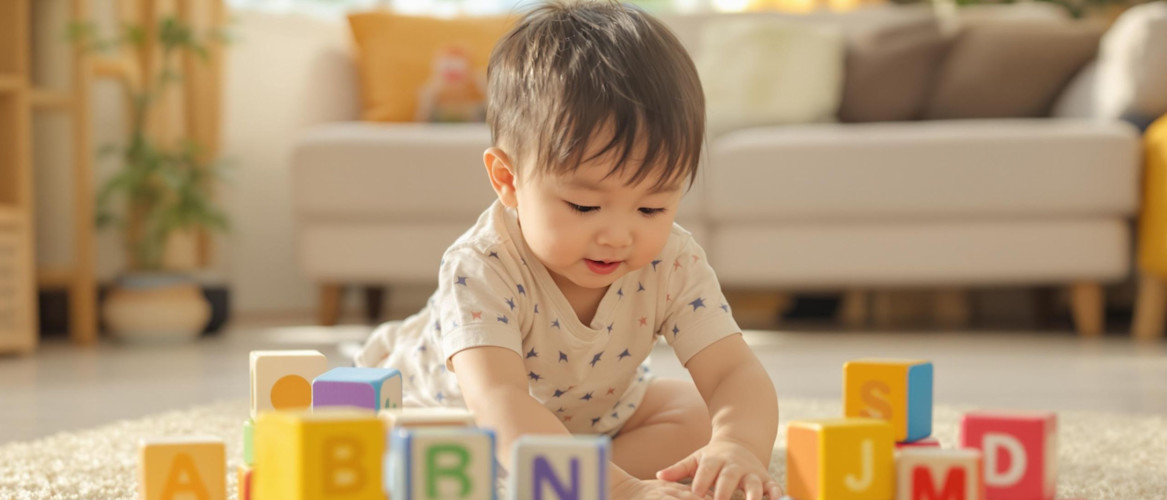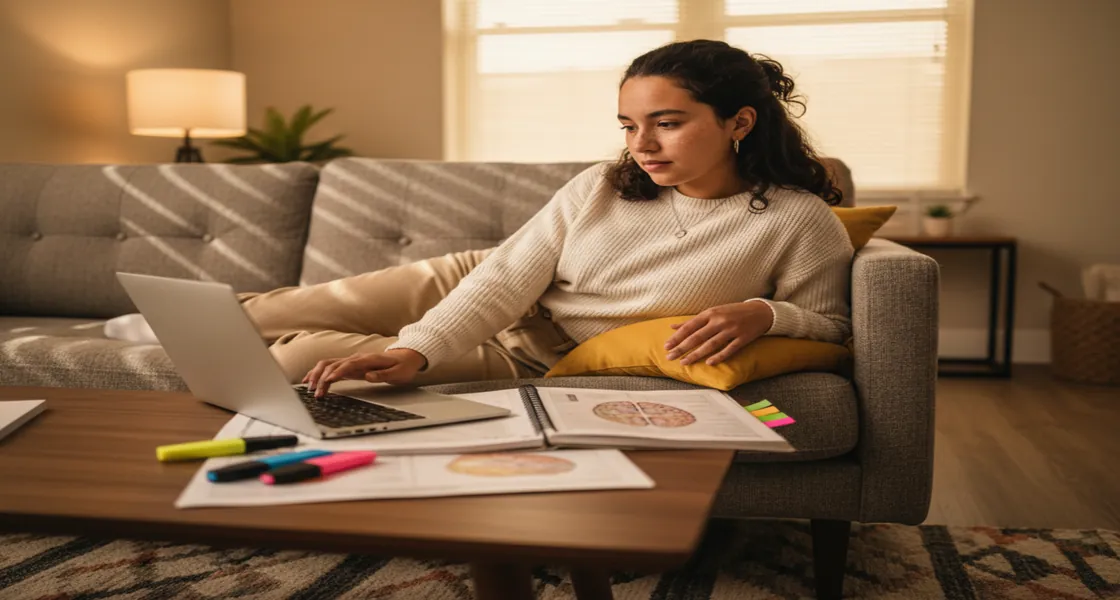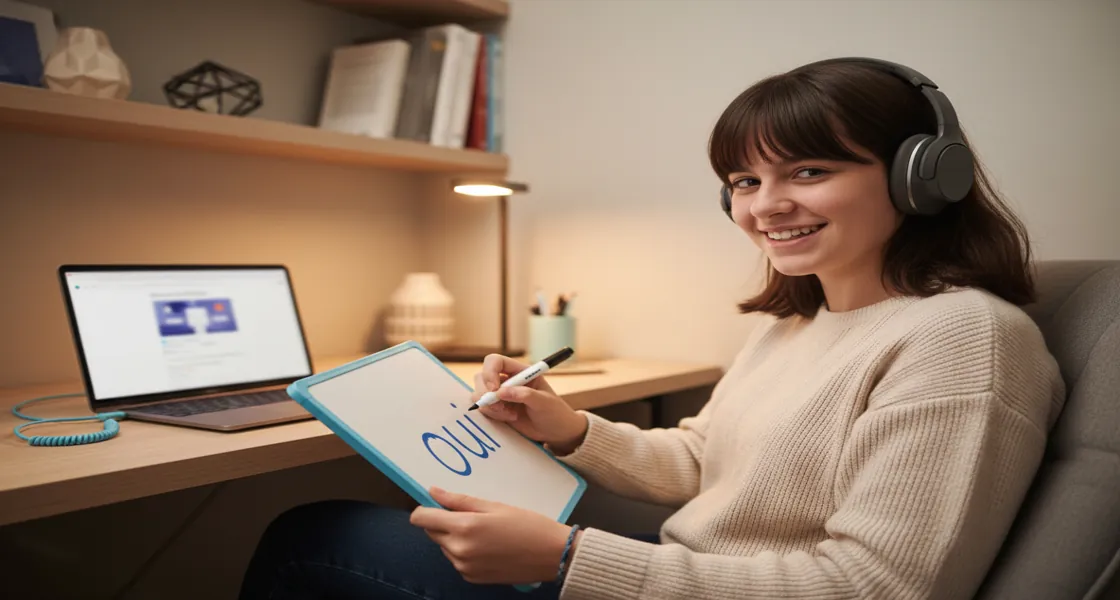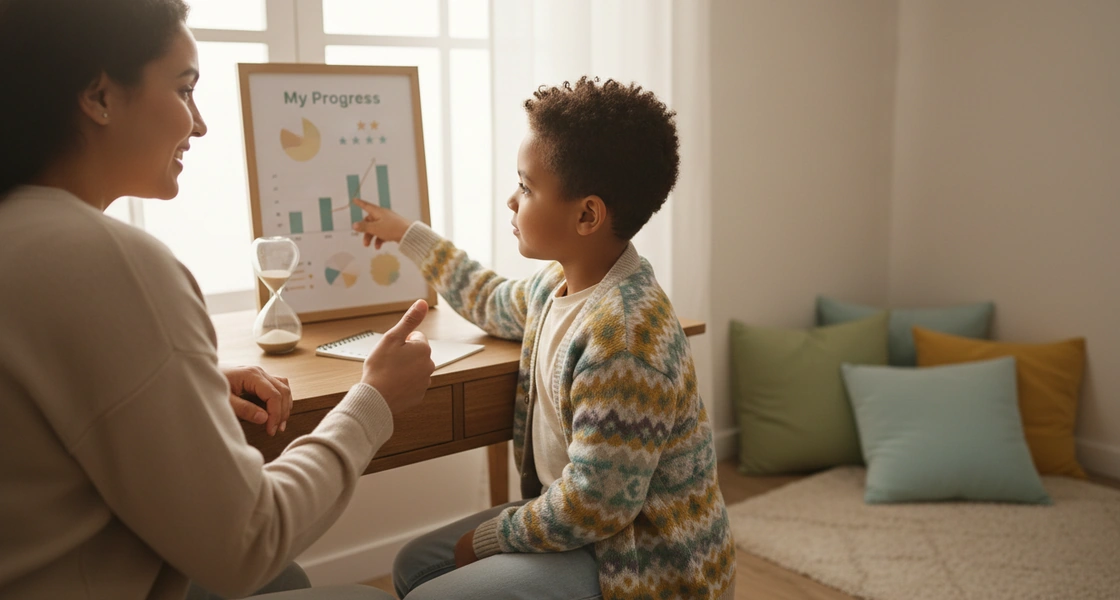No one remembers their ABCs because they sat through a long lecture about them. It’s the singing (and the dancing!) along to alphabet songs that makes those letters hard to forget. Adding a little creativity to your everyday routine is often all it takes to help letter learning click.
At Outschool, we understand that early learning works best when it’s flexible, creative, and enjoyable. In this guide, you’ll find simple strategies to help your young learner build letter recognition skills with confidence, at a pace that feels just right for them.
Start with familiar names and words
Letters become much easier to recognize when they show up in words that already matter for your learner. Starting with their name and other familiar favorites helps make the alphabet feel personal. Try these fun ways to build alphabet recognition through familiar words:
- Focus on the letters in your child’s name: Names are a natural first step because they feel important and exciting to recognize.
- Use family names, pets, and favorite things: Point out letters in the names of siblings, pets, or go-to snacks to make learning feel relevant.
- Spot letters around the house and neighborhood: Find letters on signs, clothing tags, and packaging—everyday moments offer lots of chances for practice.
- Take it slow with a few letters at a time: Let your learner get comfortable with one small group of letters before moving on to the next.
When the alphabet is connected to words your child already knows and loves, they’re more likely to remember them and stay engaged.
Let rhythm and rhyme lead the way
When in doubt, add a beat (or just add one anyway!). Music and rhythm aren’t just fun—they’re powerful tools for helping your child remember their ABCs through repetition and movement. Catchy songs make it easier for young learners to remember letter names and sounds, especially when they can sing, clap, or dance along.
Try these musical strategies to help your child explore the alphabet:
- Sing the classic alphabet song often: Add actions like pointing to letters or clapping along with each letter to keep it interactive.
- Use call-and-response rhymes: Chant out fun lines like “B is for ball, bouncing down the hall!” to reinforce both letters and sounds.
- Try alphabet-themed games with music: Use freeze dance or musical letter chairs to keep learners moving and listening for alphabet cues.
- Incorporate hand gestures: Adding motions to songs and rhymes helps learners remember letters while staying actively involved.
The mix of music and rhythm keeps alphabet learning light and fun, helping kids stay excited to practice again and again.
Get creative with games
When alphabet practice feels like a game, young learners are more likely to stay curious and excited to participate. Interactive activities add energy to the process and turn alphabet learning into a hands-on experience that invites movement, problem-solving, and play.
Here are some activities you can try:
- Play alphabet memory match: Use letter cards and picture cards, and have your child match the alphabet to the word that starts with it (like C + car).
- Try letter scavenger hunts: Hide letter cards around the room and encourage your learner to search for them. Call out the alphabet names or sounds as they find each one.
- Roll-and-cover letter games: Use a dice and an alphabet board—when your child rolls a number, they cover the corresponding letter or say its sound out loud.
- Incorporate alphabet puzzles and matching games: Use puzzles that pair uppercase with lowercase letters or letters with objects that begin with that letter.
These kinds of playful challenges help keep alphabet learning active and engaging, giving young learners plenty of chances to practice while having fun.
Practice letter recognition through books and storytelling
Books and stories are one of the most natural ways to introduce the alphabet to young learners. Reading together creates opportunities to slow down, notice details, and connect letter shapes to sounds in a relaxed, familiar setting.
Here are a few easy ways to build alphabet skills through stories:
- Read alphabet-themed books: Choose titles that focus on one letter per page or follow an A-to-Z format. Point to each letter as you say it to help with visual recognition.
- Go on letter hunts during storytime: Pick a target letter before reading and see how many times it appears in the book—on covers, pages, or even in the illustrations.
- Emphasize starting sounds while reading: Say words slowly and clearly, especially ones that begin with your focus letter (e.g., “Look! ‘Ball’ starts with ‘Buh’ – B!”).
- Encourage your child to tell their own stories using letters: Prompt them to make up a short story where every character or object starts with the same letter.
- Use familiar books to reinforce known letters: Go back to favorites and point out letters your learner already knows to help build confidence and recognition.
Pairing the alphabet with storytelling helps young readers make lasting connections in a calm, meaningful way, while also building a love for books that will grow with them.
Turn everyday moments into learning opportunities
Letter learning doesn’t have to be limited to structured activities—it often works best when sprinkled into everyday life. The more often learners see and hear letters in different contexts, the more familiar and approachable the alphabet becomes. Simple, casual moments like spotting letters on cereal boxes, street signs, or clothing tags can turn daily routines into learning opportunities without any added pressure.
Games like “I Spy” are a fun way to build alphabet recognition while on the go. Try saying, “I spy something that starts with the letter B,” or “I spy the letter M on that sign.” Magnetic letters on the fridge or a whiteboard can also offer quick, playful practice. Rearranging the alphabet to spell names, favorite words, or even silly nonsense words helps keep your child engaged and curious.
The key to lasting recognition is keeping these experiences light, consistent, and enjoyable. When your child encounters the alphabet often—and in ways that feel natural—they’re more likely to remember it and feel confident using what they’ve learned.
Frequently asked questions about teaching letters
Teaching the alphabet to young learners brings up a lot of good questions, especially when you’re trying to make it fun, flexible, and fit your daily routine. Below are some helpful answers to guide you as you explore what works best for you and your child.
How can I fit letter learning into a busy schedule?
Alphabet practice doesn’t need to be long or formal—just five minutes of playful interaction here and there can add up. Mealtimes, car rides, and even bath time offer simple chances to explore the alphabet together. For more tips on flexible teaching at home, check out our comprehensive guide on how to start homeschooling.
How can I personalize alphabet learning to match my child’s interests?
When letters connect to what your child already loves, it boosts motivation and attention. For example, if they love animals, you can turn letter recognition into a pretend zoo adventure. This approach is used in Outschool classes too, designed to build on your child’s interests, making it easier to keep them curious and engaged.
When should we move on to new letter challenges?
If your learner is pointing out letters in books, trying to write their name, or asking about new ones, it might be time to level up. Following their excitement is a great cue. Many families use platforms like Outschool to explore next-step activities that match their child’s pace and confidence.
Learning beyond the worksheets
The alphabet doesn’t have to stay in the classroom. It’s in your child’s name, their favorite snacks, storytime characters, and magnetic letters on the fridge. The more natural and playful the exposure, the more likely it is to click.
Outschool is here to support your journey with live online classes and remarkable tutors that meet your family where you are. With a mix of structure, fun, and flexibility, early ABC learning becomes something you can build on, one letter at a time.


.svg)
.svg)







